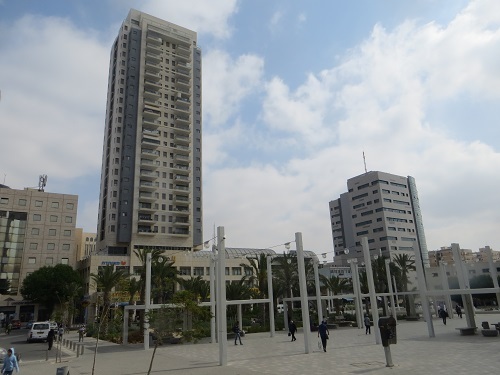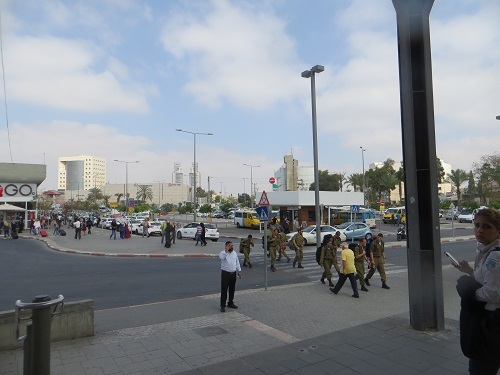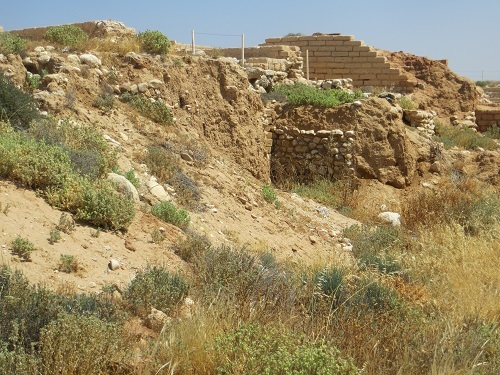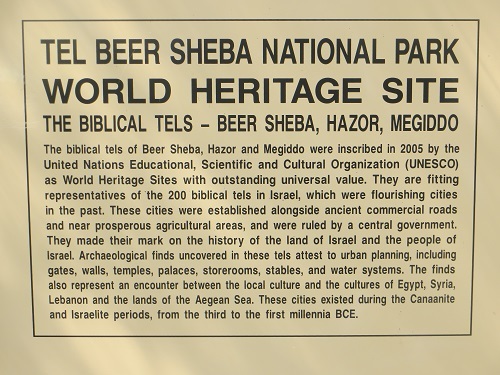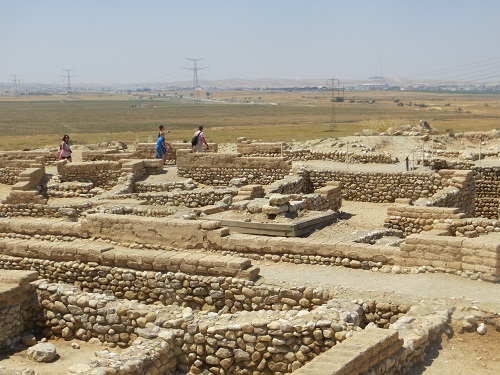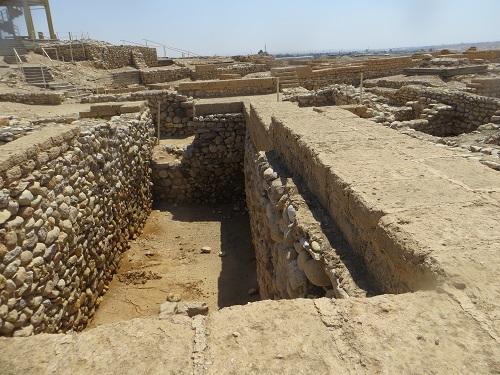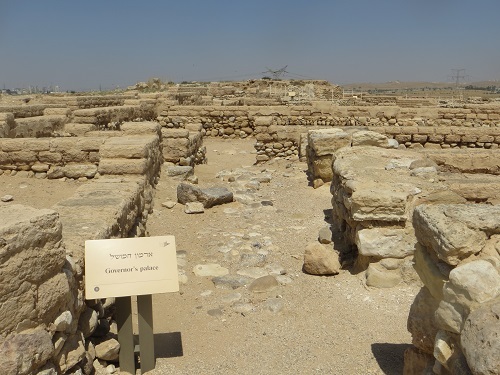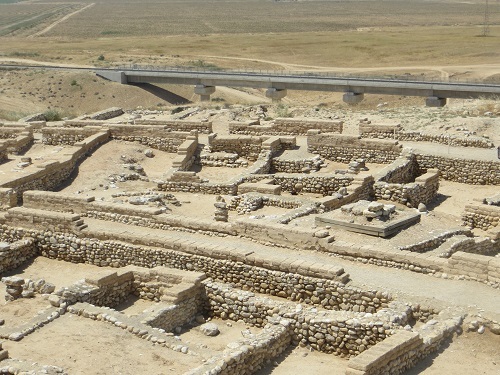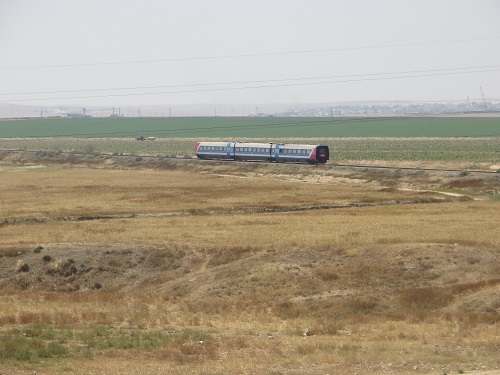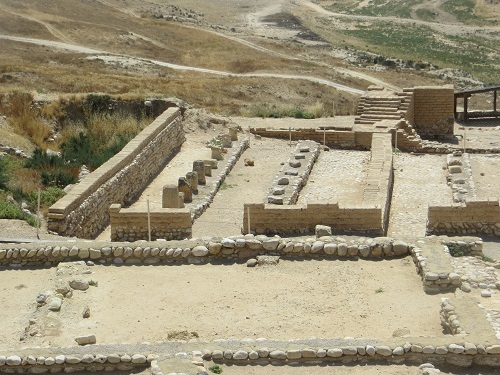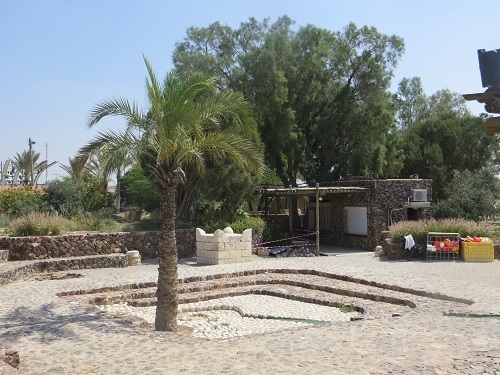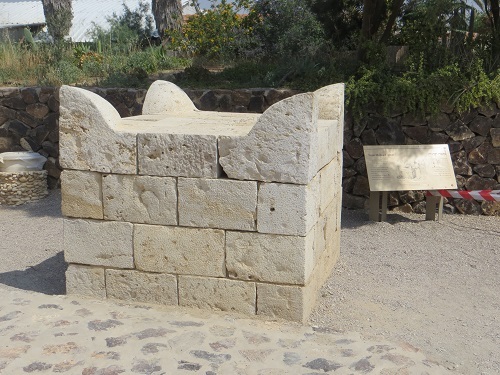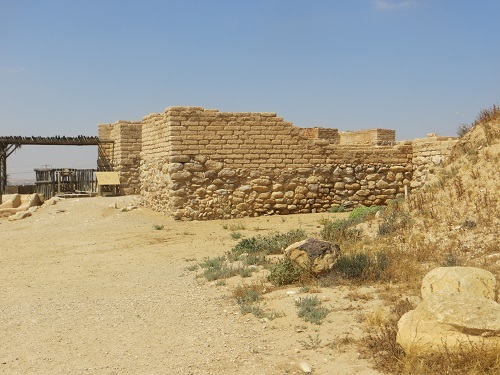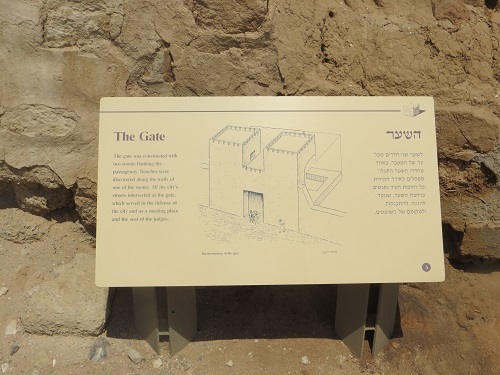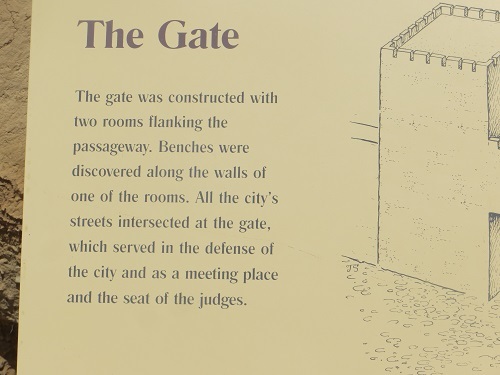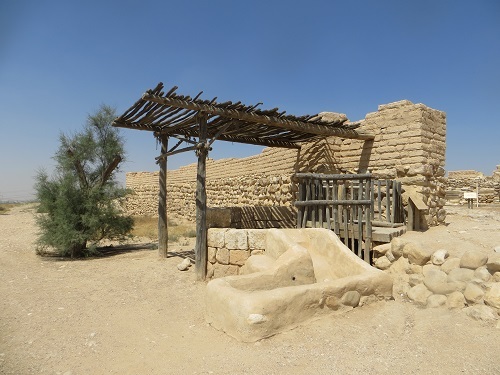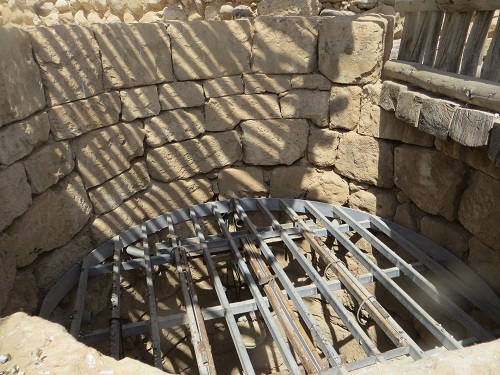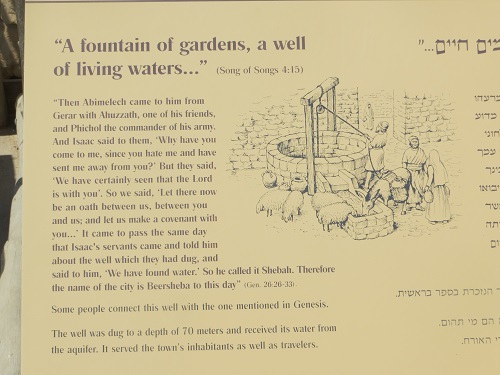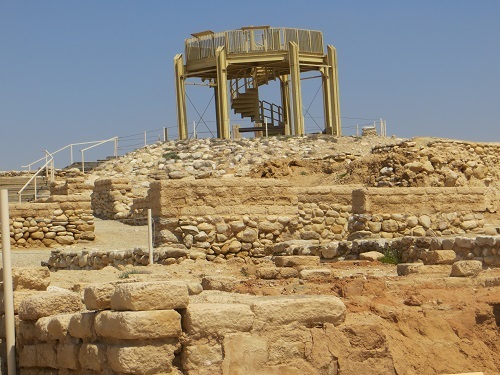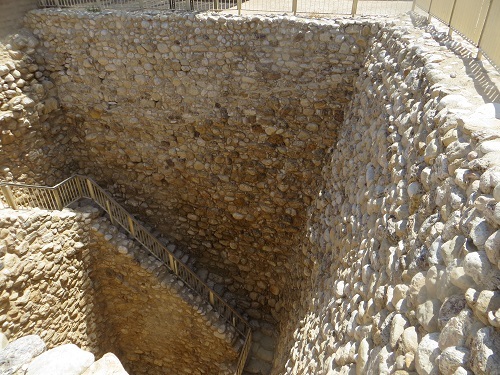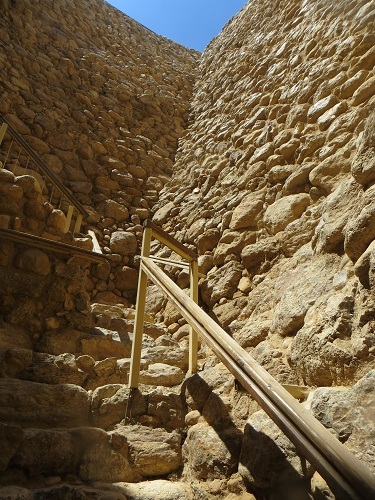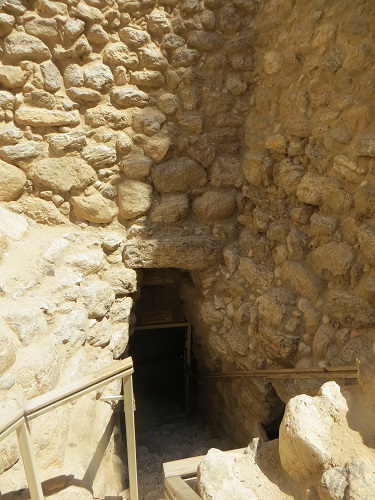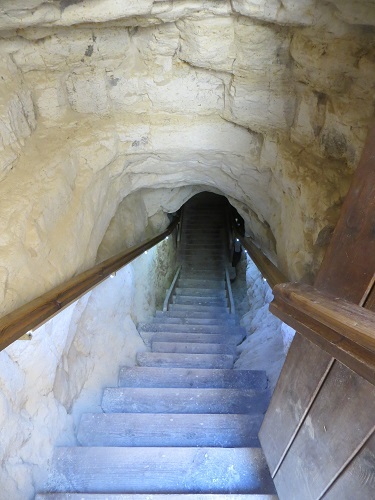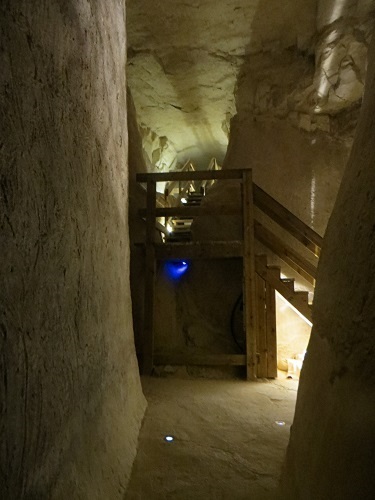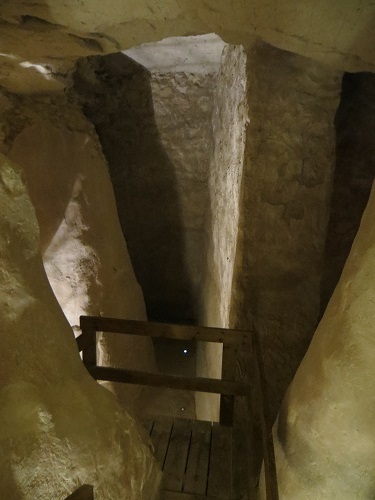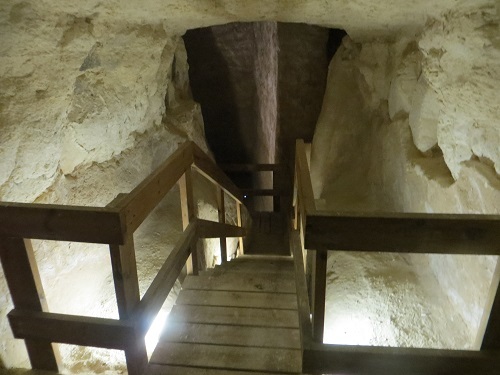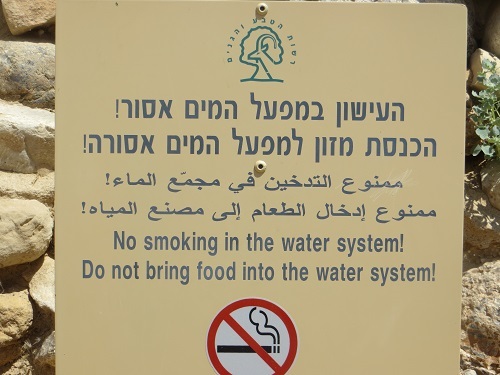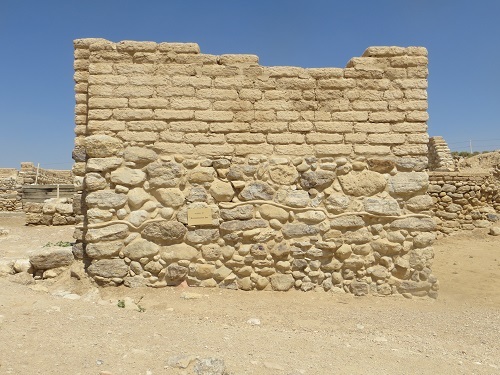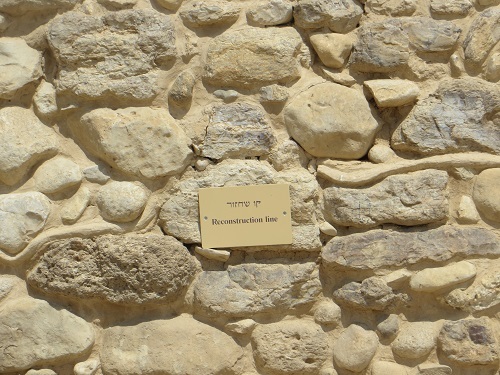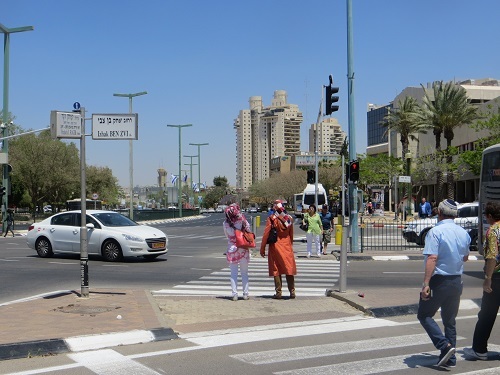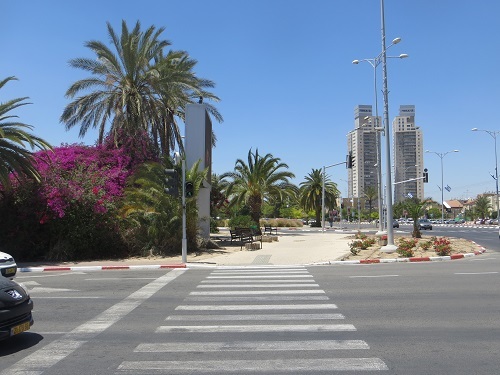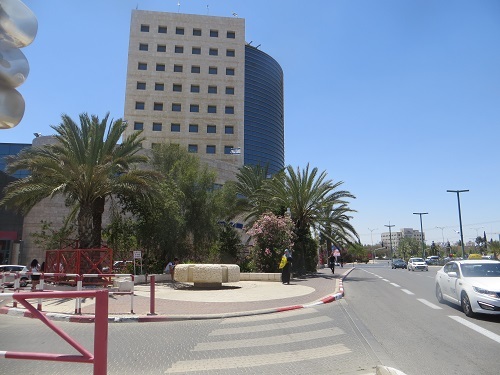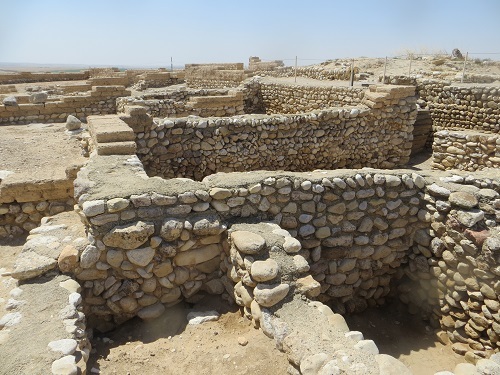Some 3,500 or more years ago Abraham, patriarch of the Jews, settled a water dispute in what is now Israel's Negev desert with Abimelech, king of the Philistines, swearing an oath that the well the Philistines had seized was his, dug by his own hands.
The two signed a treaty enshrining Abraham's rights, Abimelech returned to his own capital of Gerar, and the treaty site has ever since been known as Beersheba, Beer Sheva in Hebrew - Well of the Oath.
Today, Beersheba is a modern university town of some 200,000 people, at 25 miles from the Gaza strip further than either Sderot or Netivot, though still within range of incoming grad rockets that have at times pummelled the city.
But if you move a couple of miles to the east of its high-rise skyline - and 3,000 and more years back in time - you'll come to the archaeological hill where the biblical Beersheba once thrived, where Isaac built an altar to the Lord, and after leaving which Jacob dreamt of his stairway to heaven. Here too the prophet Elijah took refuge after Jezebel ordered him killed.
Here you can let your imagination roam back among the ruins of Tel Beer Sheva National Park, if not to the days of Abraham, although wells and magnificent waterworks abound, then to those of Kings Uzziah and Hezekiah of Judah, and the conquering Sennacherib of Assyria, he who gave rise to Lord Byron's immortal poem:
The Assyrian came down like the wolf on the fold,
And his cohorts were gleaming in purple and gold;
And the sheen of their spears was like stars on the sea,
When the blue wave rolls nightly on deep Galilee...'
Excavations have uncovered 12-foot-wide walls and gates, public and residential buildings, storehouses and a grid or streets, and the famed water system of shafts, reservoirs and hewn feeder channels of a fortified town built by the ancient stream beds of the Beer Sheva and Arad valleys, which though then already dry provided the lure of readily available underground aquifers.
Archaeologists have found potsherds going back to the chalcolithic period between 4500 and 3500 B.C., but the first architectural remains date from the early Israelite period around 1000 B.C., continuing for the next 500 years through the life of the kingdom of Judah and beyond.
The city was rebuilt in the 8th century B.C. after being partially destroyed by an earthquake, which some scholars hold to be the one mentioned by the prophet Amos. Casemate walls and a new gate replaced those that collapsed, and a governor's palace was built.
A mighty fire wrought havoc on the city a few decades later, which scholars link to King Sennacherib's devastating campaign of 701 B.C. The biblical Book of Kings mentions that in the 14th year of King Hezekiah, King Sennacherib of Assyria marched against all the fortified towns of Judah and seized them.
That was before the enemy camped before Jerusalem and the Lord went out and killed 185,000 Assyrians, putting the rest to flight. We have Sennacherib's own somewhat different version in a baked clay cuneiform prism found in 1847 in the ruins of his palace in Nineveh, delivered with characteristic modesty.
'The terrifying splendor of my majesty overcame... Hezekiah, the Judahite,' the monarch records, adding that he destroyed 46 strong walled cities as well as small towns, and imposed a huge tribute.
The first thing you encounter on entering the complex is a replica of a sacrificial four-horned altar used in the idol worship denounced by the prophet Amos; the dismantled stones were found incorporated in a storehouse wall. The original is in the Israel Museum in Jerusalem.
Scholars link its dismantling to King Hezekiah's campaign against idolatry in which 'he did what was pleasing to the Lord... [and] abolished the shrines and smashed the pillars and cut down the sacred posts.'
The main ruins at the top of the hill are well marked with full descriptions, without which you would be hard put to know what they were. These include the main gate, the city square, the governor's palace, the residential quarters and store houses.
Some scholars posit that a deep well outside the main gate may be connected to the one first dug by Abraham, but no archaeological proof has been forthcoming so far.
A small observation tower affords a panoramic view over the ruins and out to modern Beersheba on one side and the minarets of the Arab town of Tell as-Sabi on the other, built in 1967 as part of the Israeli government's project to settle the nomadic Bedouin.
By far the most impressive remains are the remarkably well-preserved millennia-old water system. A stairway leads down the 60-foot-deep stone shaft to the large underground chambers of the reservoir, reinforced by ancient support walls, and the feeder channels.
You leave by a secondary opening hewn into the rock during work on the system in antiquity and then blocked up, no doubt for security reasons in case of siege. It was reopened during the excavations as an exit from the mound. Nearby a stone-built channel let in flood water from the Hebron streambed.
Another view
Below the entrance a large arena-like event place with a sloping canvas roof provides capacity for 800 people for those who want to get close to their root to celebrate marriages and bar mitzvahs.
For your wedding or bar mitzvah where Abraham drew water
Together with two other biblical sites in Israel, Tel Megiddo and Tel Hazor, Tel Beer Sheva has been inscribed on UNESCO's list of World Heritage Sites. The first excavations were carried out form 1969 to 1976, with further excavations and extensive restoration effected from 1990 to 1995.
Modern Beersheba, meanwhile, is a true melting pot, bringing together Jews from North Africa, Iraq and other Arab countries, India, the former Soviet Union, and Ethiopia, together with Bedouin Arabs who represent 10 percent of the total.
This becomes amply obvious as you stroll down the boulevards with tree-lined medians and the flower bedecked side streets of this bustling city, which is undergoing a beautification campaign with fountains, bridges, playgrounds and parks.
And the influx of Soviet immigrants has brought the city something Abraham & Co. never could when they laid claim to it all those millennia ago. Beersheba is now reputed to be home to the largest number of chess grandmasters of any city in the world.
______________
By the same author: Bussing The Amazon: On The Road With The Accidental Journalist, available with free excerpts on Kindle and in print version on Amazon.
